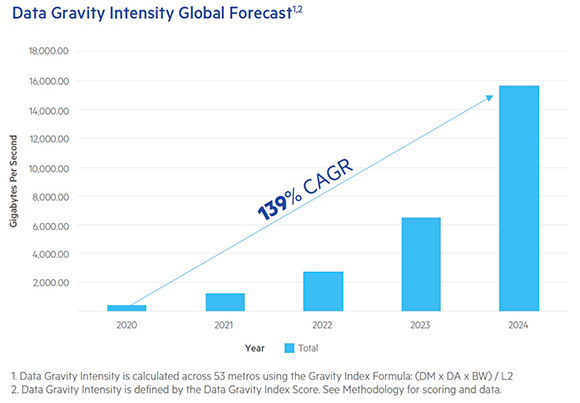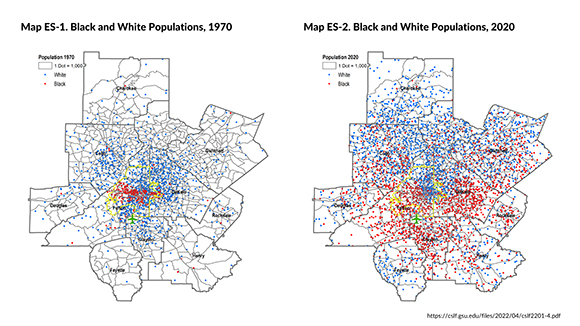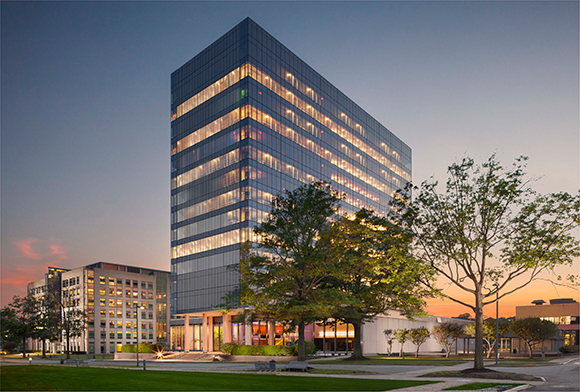|



|
FROM SITE SELECTION
MAGAZINE, MAY 2022 ISSUE
|

|
GREAT LAKES
That’s the shipping news from the Great Lakes Seaway Partnership.
|
|

|
NEW ENGLAND
A Boston Fed economist’s examination of sectoral mobility may hold
lessons for the post-COVID-19 labor shuffle.
|
|
|
CONWAY ANALYTICS
SNAPSHOT
|

|
Digital Realty says Data Gravity Intensity, as measured in gigabytes per
second, is expected to grow across 53 metros by a CAGR of 139% globally
through
2024.
Graph courtesy of Digital Realty
|
|
Digital Realty this week released a new metric, the Data Gravity Index, and a 41-page report
measuring the intensity of data gravity across 23 industries in 53
global metro areas. What’s data gravity, you ask? Good question. It’s
based on “analysis of thousands of attributes of Global 2000 Enterprise
companies’ presences in each metro, along with variables for each metro,
including GDP, population, number of employees, technographics, IT
spend, average bandwidth and latency, as well as flows of data.” A
metro’s score, as measured in gigabytes per second, provides a relative
proxy for measuring data creation, aggregation and processing, says the
company.
Some might think a high score would be a good thing, as it reflects
dynamic business activity. But in the realm of data processing, it’s an
obstacle. “As a cohort, Global 2000 Enterprises have the greatest
propensity to need to address Data Gravity,” the report stipulates,
noting that these companies spend $2.6 trillion annually on IT
infrastructure and networking serving millions of users and endpoints.
From 2020 to 2024, the report says, the overall top six metros with the
highest compound annual growth rate in data gravity (in descending
order) are:
- Jakarta, Indonesia
- Singapore
- Rome, Italy
- Hong Kong
- Melbourne, Australia
- Atlanta, Georgia
The Conway Projects Database has tracked 69 data centers in those six
metro areas since 2015, with 28 of them landing in metro Atlanta and 25
in Singapore. — Adam Bruns and Daniel Boyer
|
|
|
TEXAS ECONOMIC
DEVELOPMENT GUIDE 2022-2023
|

|
FOOD PROCESSING
Nearly 40-years of steady growth at Frito-Lay’s plant in Rosenberg and
Leprino Foods’ investment in Lubbock are just two highlights in a
thriving sector.
|
|
|
SITE SELECTION
RECOMMENDS
|

Click Here to Enlarge
Scattergram map courtesy of Georgia State University
Where Blacks and whites live in relation to each other in metro Atlanta’s
inner 10 counties has changed dramatically during the last 50 years,
according to new research by economists at Georgia State
University. “Population growth and landmark federal policy precipitated
substantial changes in Black residential patterns — particularly in the last
20 years — in a metro region that had been deeply segregated by race,” the
university said.
|
  |
Saskatchewan
After millions of dollars of outlay over years and an announced
commitment to further investment made last August, BHP’s largest potash
mine in the world received extra momentum this month when Canadian
Federal Minister François-Philippe Champagne announced the Government of
Canada’s intent to support and advance the project’s development with up
to a C$100M investment. The investment is through the government’s
Strategic Innovation Fund (SIF), which supports large-scale,
transformative, and collaborative projects that will help position
Canada to prosper in the global knowledge-based economy. “. “This
support from the Canadian government is a belief by a key stakeholder
that Jansen potash mine will be one of the most technically advanced in
the world and the most sustainable,” the UK-Australian conglomerate
said. The company plans to create 3,500 jobs at peak construction and
around 600 ongoing jobs through mine operations. Look for more Canadian
project news in the annual Canada’s Best Locations report in the September issue of Site Selection.
Nevada
Cros is planning to construct this 600,000-sq.-ft. distribution and
warehouse facility in North Las Vegas, creating 250 jobs in the first
two years of operations, with the potential for 325 jobs within five
years. The company was one of seven approved for state incentives at the
Nevada Governor’s Office of Economic Development (GOED) Board of
Directors meeting held last week, including four in southern Nevada.
“Since January of 2019, the 86 companies that have received abatements
will create 13,227 jobs over five years,” said Governor Steve Sisolak.
“These companies are making $2.4 billion in capital investments and will
generate $1.2 billion in new net tax revenues over the next decade.”
Watch for the Nevada state spotlight in the September issue of Site Selection.
|
|

|
Symbolic of a New York/New Jersey life sciences market that ranked No. 4
in CBRE’s inaugural Life Sciences Talent Report in June was the March
opening of Eisai Inc.’s new U.S. headquarters at the ON3 development
spanning Nutley and Clifton, New Jersey. The LEED-certified facility
will bring approximately 800 jobs to the area and, at full capacity, the
new facility will accommodate 1,300 employees, though one aspect of the
new HQ is the company’s hybrid workplace model providing eligible
site-based employees the opportunity to work remotely for up to three
days per week.
The company’s sustainability priorities go beyond the
emissions-conscious scheduling and the location at Prism Capital
Partners’ repurposing of the former Hoffmann-La Roche campus site. As
documented by Eisai’s Terrell Carothers and Teresa Cronin in a blog
posted in April, the company partnered with Green Standards, which
specializes in “sustainable decommissioning” — helping companies manage
the removal and redistribution of workplace assets through charitable
donations. In other words, the old office stuff doesn’t get mindlessly
chucked into dumpster after dumpster.
The collaboration turned what would have been more than 400 tons of
corporate waste into $42,600 in charitable donations to 10 non-profit
and charitable organizations in the New Jersey area, including schools
and libraries.
|
|
|
|

